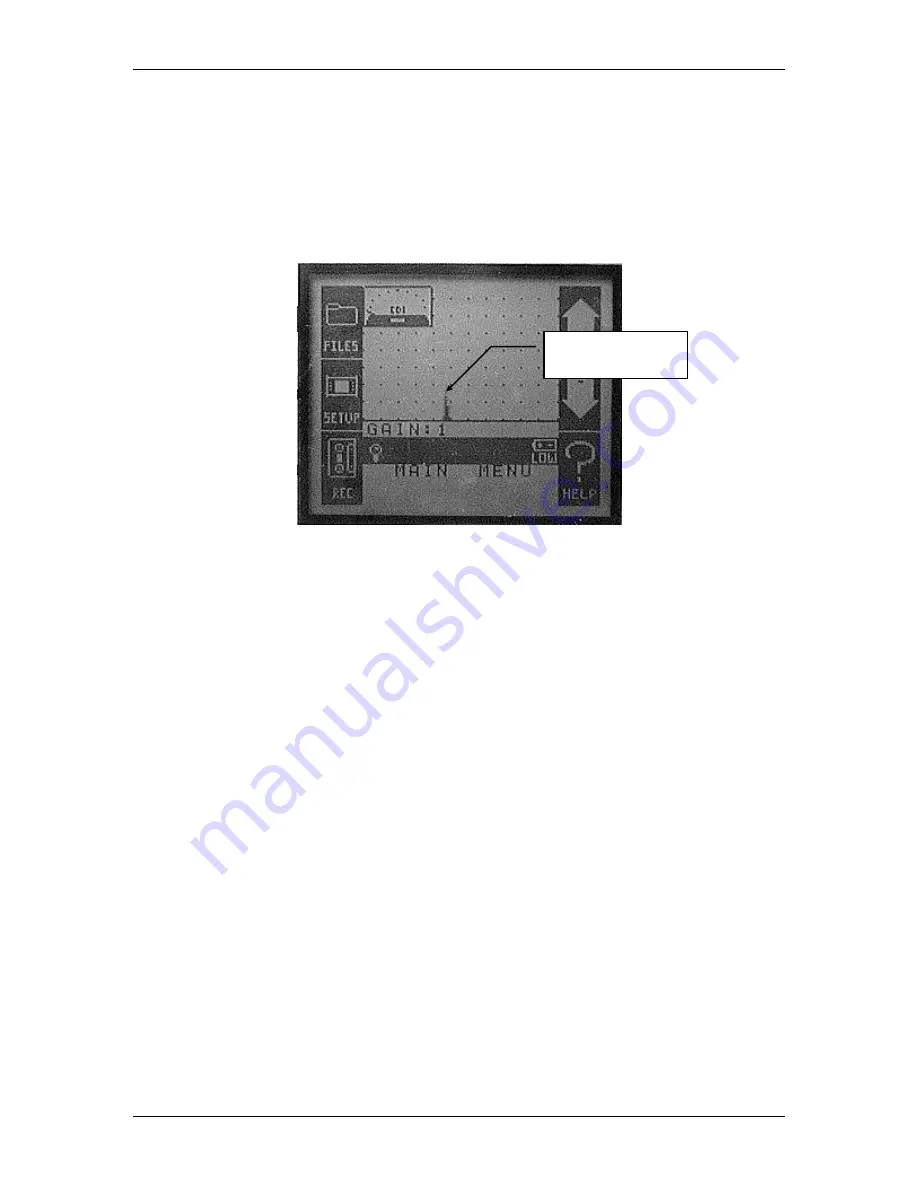
CD42 Pipeline Pig Location & Tracking System
Page 8
Pressing the “up arrow” gain button
increases
the receiver‟s sensitivity, while pressing the “down
arrow” gain button
decreases
the sensitivity. A good starting gain level for the unit is “5”.
Once the receiver‟s gain is set, gently bump the attached GP antenna. Doing so should produce a
small but noticeable ripple to appear, flowing slowly from the right to the left on the receiver‟s
display. If no noticeable ripple appears after bumping the GP antenna a few times, then the cable
connection should be checked. Bumping the antenna should produce a result that looks similar to
Figure 3:
Figure 3
An Input Signal Flows Across the Screen
Successfully having performed these steps indicates that the receiver, cabling and antenna are
operating correctly and are ready to receive transmitter signals.
Note:
The CD42 system is based upon magnetics. The transmitter emits a pulsing
magnetic field that is received by the antennas and displayed to the operator
on the receiver’s LCD. As with just about any transmitter/receiver system
there are potential sources of interference, most of which the system is able to
filter out on its own. However, jarring the receiving antennas will produce
spikes of interference on the LCD. It is recommended that you experiment
with the system at different gain (sensitivity) settings until you feel
comfortable with what to expect.
The Antenna
The CD42-GP receiving antenna is quite sensitive, with a through-pipeline range of approximately
15 feet using our smallest transmitter. The GP also has a proprietary design that allows it to reject
the magnetic noise produced by moving it through the earth‟s magnetic field. The benefit of this
technology to the end-user is that he can walk and search for transmitter signals simultaneously; a
great time saver when performing field work.
The antenna should normally be held in a parallel orientation to the
transmitter
in the pipeline.
Since the transmitter is normally mounted onto a pig in an orientation parallel to the pipeline, the
antenna should be held parallel to the pipeline as well. This means that when walking above a
pipeline that runs North/South, the length of the antenna should also be running North/South,
offering the best possible reception of transmitter signals.
A GP antenna oriented parallel to a pipeline should look something like Figure 4:
A pulse generated by
bumping the CD42-GP
antenna.









































